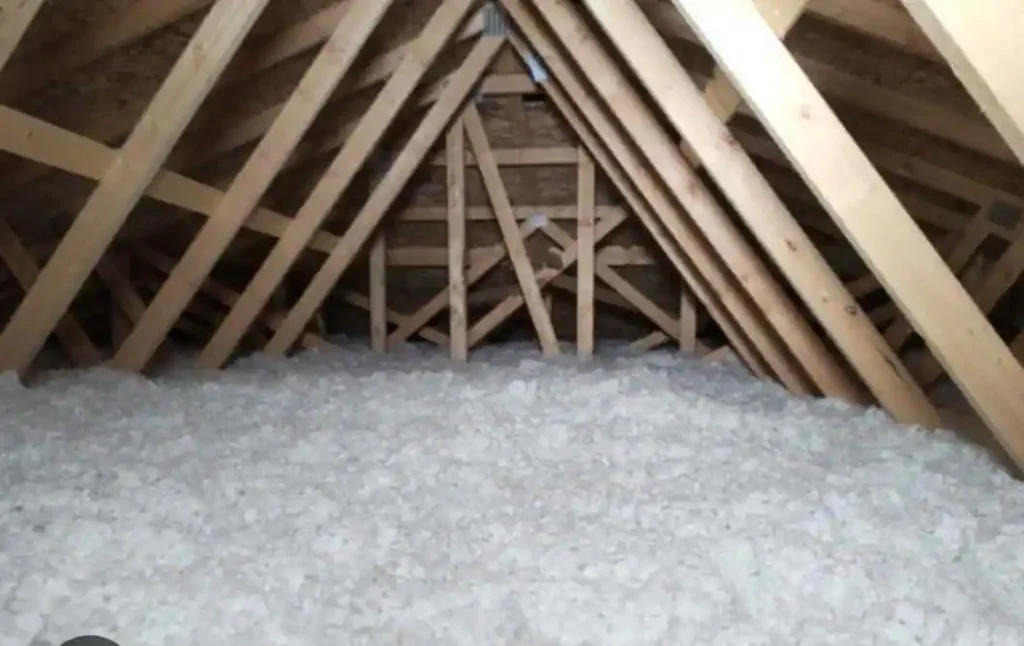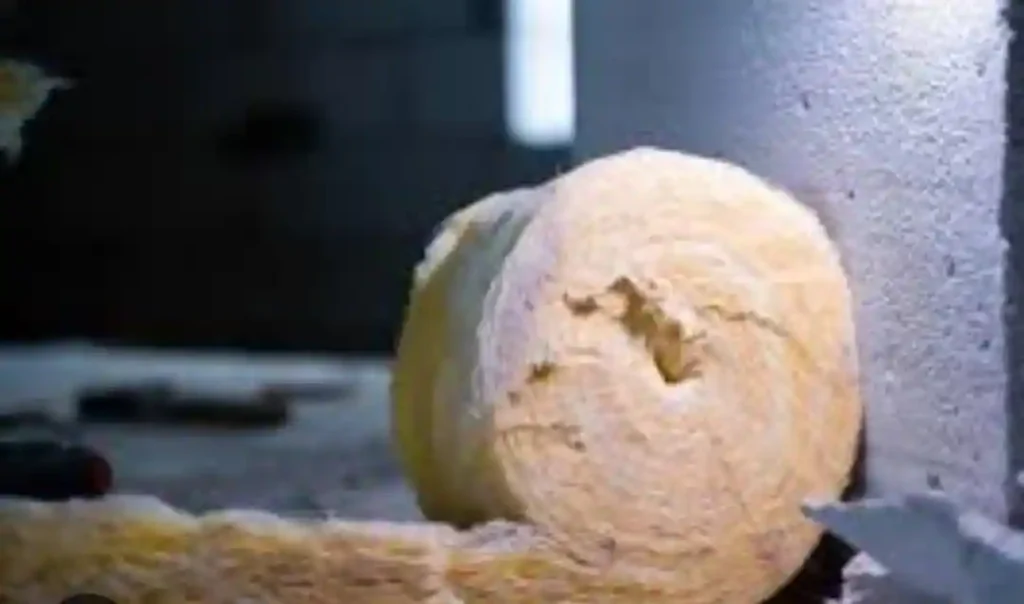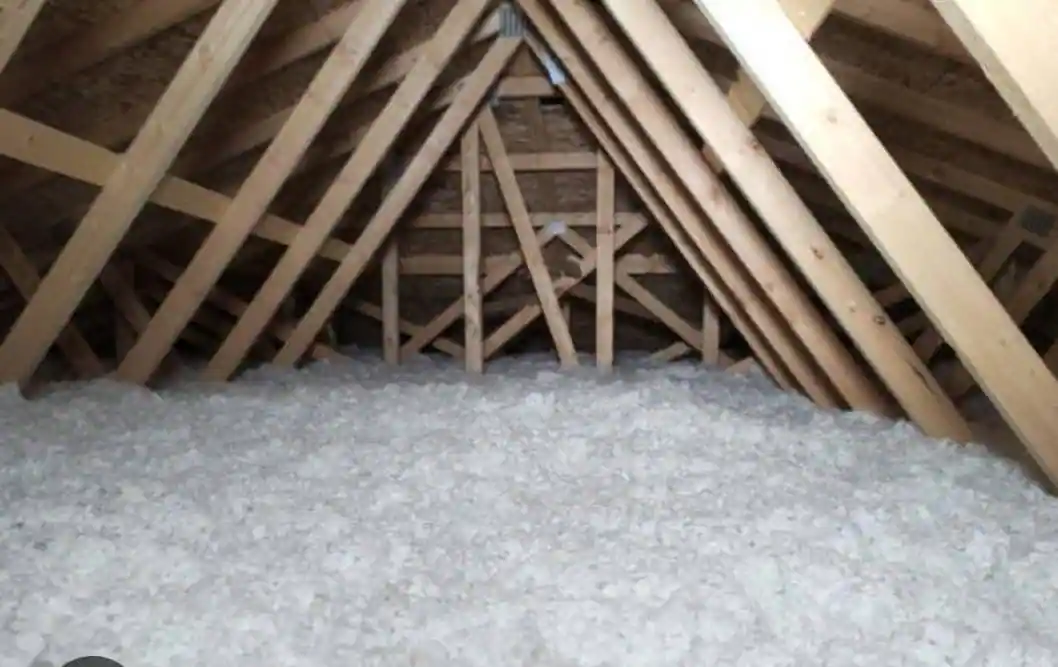Blown insulation vs rolled insulation, is helpful to find out which is the better insulation method for both of them. Two popular forms of insulation materials that are used to improve a building’s energy efficiency are blown-in insulation and roll insulation. Both roll and blown-in insulation can able to improve total energy efficiency and save it, help to minimize heat transfer as well as maintain a pleasant interior temperature. Let’s see each and all about blown-in and roll insulation in more detail:
Benefits Of Blown In Insulation– Blown insulation vs rolled insulation
First, we shall go with blown-in insulation information and find out some key features of that insulation type, let’s read on the post-
Blown-in insulation is also known as Loose-fill insulation. Blown-in insulation is a type of material that is put in space by pouring or blowing loose pellets or fibers into it. This loose-fill insulation technique helps and works especially well for insulating elongated or difficult-to-reach places, including walls or attics. A variety of materials in blown-in insulation methods and types, such as mineral wool, cellulose, or fiberglass, can be used to make the insulation material.
The advantages of blown-in insulation
Effectiveness and efficiency of performance:
When used to fill in gaps and holes in unusually shaped spaces, blown-in insulation creates an expanded insulation barrier with amazing efficiency.
Cost-effective:
When compared to traditional insulation methods, the installation process is very short, which lowers labour payments.
Energy Saving:
Good insulation keeps a building’s temperature constant, which lowers energy costs by minimizing the need for heating or cooling.
Friendly to our Environment:
A significant amount of blown-in insulation is made up of recycled materials, which promotes sustainability.
Sounds absorption quality:
Blown-in insulation is a suitable option for both thermal and acoustic insulation since it can lessen noise transmission.
Resistance to Fire:
Certain blown-in insulation types, such as fiberglass and mineral wool, are known as naturally fire-resistant.
Now in the next section, we will see what actual advantages and benefits we will get, by using the rolled insulation types, let’s read further post-
Benefits of Roll Insulation – Blown in insulation vs roll

One kind of thermal insulation material is roll insulation, which is supplied in flexible rolls. This roll-form insulation is mostly used to increase energy efficiency as well as maintain appropriate interior temperatures in both residential and commercial buildings and makes a healthier inside environment. Here is a thorough explanation of the advantages of roll insulation:
The advantages of roll insulation
Thermal Efficiency:
Roll insulation reduces heat movement between a building’s interior and outside by acting as an effective thermal barrier. This roll insulation works as an aid in preserving a steady as well as cozy interior temperature and helps to make your home more thermal energy efficient.
Energy Savings: Roll insulation helps reduce energy costs by reducing heat gain in the summer and loss in the winter. It lessens the strain that HVAC (heating, ventilation, and air conditioning) systems must do.
Sound absorption
Roll insulation also can absorb sound like blown-in insulation, which helps to lessen the amount of outside and inter-room noise. The sound absorption ability of insulation materials and types is most important and beneficial for daily life.
Fire Resistance:
Certain roll insulation materials, such as mineral wool, are naturally fire-resistant, which increases building safety.
Environmental Impact: Compared to artificial options, natural fiber roll insulation may have a lower embodied energy and is produced from renewable resources, making it a more ecologically friendly choice.
Moisture Resistance: The moisture resistance of fiberglass roll insulation inhibits the growth of mildew and mold.
Cost-Effectiveness: When considering various insulation options, roll insulation is typically less expensive. Long-term energy savings usually equal the initial costs.
Blow In Insulation vs Roll/ Blown Insulation vs Rolled Insulation
Two common forms of insulation materials used in houses and buildings to increase energy efficiency are blown insulation and rolled insulation. Every kind has pros and drawbacks of its own like Batts vs Roll Insulation, if you didn’t read this post, then click and read. The following is a comprehensive examination of rolled and blown insulation:
Blown-in insulation
Method of Installation

Application: Loose-fill materials such as mineral wool, cellulose, or fiberglass are commonly used to make blown insulation. Using a specialized machine, the material is sprayed or blown onto the specified area
Versatility/ Flexibility: Blown insulation works well in areas with uneven unequal or difficult-to-reach small holes and cracks.
Coverage and Accuracy- Blown Insulation vs Rolled Insulation
Similarity
Since blown insulation follows the shape of the area, it fills in holes and gaps more well, it usually offers more uniform coverage.
And Blown-in or loose-fill Insulation’s Nature
Unlike other types of insulation, loose-fill/Blown-in insulation may easily fill in gaps and holes.
R-Value
Thermal Resistance: The ability of blown insulation materials to withstand heat flow is demonstrated by their competitive R-values.
Speed of Installation
Efficiency: When it comes to big or irregularly shaped regions, blown insulation may frequently be installed more quickly than rolled insulation.
Expert Installation
Expertise: Installing blown insulation is a task best left to skilled contractors since it frequently calls for specialized tools and knowledge.
Rolled Insulation
Method of Installation

Form: Rolled insulation, sometimes referred to as batt insulation, is supplied in pre-cut rolls or blankets composed of mineral wool or fiberglass. It is installed by unrolling it and slipping it in between a structure’s framework components.
DIY Friendly: For easier installs, homeowners frequently utilize rolled insulation, which is more do-it-yourself friendly.
Control and Accuracy
Control: You have more control over the installation process when you use rolled insulation. It is simpler to perfectly fit within the typical stud-joist spacing.
Shaping and Cutting: It is easily shaped to fit around obstructions such as pipes or electrical wiring.
R-Value
Comparable R-Value: The R-values of rolled insulation materials are competitive, much like those of blown insulation.
Resistance to Moisture
Concerns: Because rolled insulation can hold water when wet, improper installation may make it more vulnerable to moisture-related problems.
Price
Affordability: Many homes choose rolled insulation over blown insulation since it is frequently less expensive.
What Is Better Blown In Insulation or Rolls, Consideration for Both Types
If you are considering blown best insulation material, blown-in or roll insulation type, but are confused between them, then select one of them by considering the following points, will be helpful to you to select one them, blown-in insulation or rolled insulation best for your need-
Fire Resistance
There are fire-resistant options for both kinds of insulation, but it’s important to take the material’s fire rating into account.
Effect on the Environment
Common components in both types are mineral wool and fiberglass, which are regarded as environmentally beneficial. On the other hand, production energy and manufacturing procedures need to be taken into account.
Resistance to pests
If blown or rolled insulation is not adequately treated with chemicals or protected, it might become vulnerable to pests.
Building Rules and Regulations
The selection between these two insulation kinds may be influenced by local building codes, so it’s critical to confirm and abide by the rules.
Room and Easily Accessible
Blowing insulation may be a better option if your attic is a big, open space. Rolled insulation may be easier to work with when insulating walls or areas that have challenges.
Homemade/ DIY vs. Professional Installation
While rolled insulation is easier to install yourself, blown insulation frequently needs to be professionally installed.
Considering Costs
For do-it-yourself projects, rolled insulation is typically less expensive than blown insulation, which may cost a little more because it requires specialized tools and expert installation.
The decision between blown and rolled insulation ultimately depends on personal preference for DIY or professional installation, the particular application, and budgetary limitations.
How To Use Blow In Insulation

Materials Needed
- Blow-in insulation (fiberglass, cellulose, or other types)
- Insulation blower machine
- Protective gear (goggles, mask, gloves)
- Ruler or measuring tape
- Utility knife
Steps
Prepare the Area- how to use blow-in insulation
Make sure there is no dust and that the attic or the area where the blow-in insulation is being installed is clean.
To optimize the efficiency of insulation, seal any gaps or air leaks.
Use safety aids
Put on protective clothing to protect yourself from insulation fibers, such as gloves, a mask, and goggles.
Put the insulation machine in load.
As directed by the manufacturer, load the blow-in insulation material into the insulation blower machine.
Setup the machine
Adjust the machine’s settings to the kind and level of insulation that is suggested for your project.
Get Blowing Started
Start at the entrance or attic hatch, which is typically the furthest location away from the access point.
Spread the insulation evenly, covering the entire area with a sweeping motion of the nozzle.
Keep Things Consistent
Maintain a constant insulating thickness to get the required R-value.
Follow Safety Procedures
Take care not to overfill because this can compress the insulation and lessen its efficiency.
Keep a watch out for wiring and other heat-generating parts, and give them sufficient room.
Fill gaps and Corners
To ensure complete coverage, pay close attention to filling in any gaps, corners, and spaces surrounding barriers.
Inspect the Work
Make sure that the insulation spreads properly and reaches the recommended depth by periodically inspecting your work.
How To Install Rolled Insulation

How to install Rolled Insulation
Materials -how to install rolled insulation
-Material You’ll Need to Install Rolled Insulation:
Insulation in rolls, either fiberglass or another kind
A measuring tape
A utility knife
protective clothing (mask, gloves, and goggles)
Supports for insulation or staple guns
Steps:- how to install rolled insulation
Measure and Cut:
To ensure proper installation of insulation, measure the length and width of the area and cut the rolled insulation correctly.
Position the Insulation:
Unroll the insulation between joists or studs and position the paper or foil vapor barrier facing downwards when positioning the insulation between joists or studs.
Break Over Barriers:
Cut the insulation to fit over any bracing that crosses electrical boxes, for example.
Staple and Provide Material If Needed:
Use insulation supports or a staple gun to fasten the insulation to the joists or studs. Make sure the insulation fits tightly without being compressed.
Seal Holes, Cracks and Gaps:
To stop air leaks, fill in any spaces with more insulation.
Keep out the Procedure Again:
Continuously install insulating rolls until the entire area is covered.
Layers of more insulation if Needed:
Install a second layer perpendicular to the previous layer, staggered at the seams if more insulation is required.
Inspect the installation:
Check the installation regularly to make sure the insulation is not compressed or has any gaps in it.
Always take guidance from a professional installer to the detailed instructions supplied by the insulation manufacturer, and seek the advice of a qualified installer if in doubt.
Blown In vs Roll Insulation Cost
The type of insulation, the material used, the area that needs to be insulated, and the R-value—a measurement of thermal resistance—all affect how much insulation costs. Two popular types of insulation are blown-in and rolled, and the following is a rough summary of their costs:
Blown Insulation Cost
Blown Insulation is best for insulating a home. Loose-fill insulation, sometimes referred to as blown-in insulation, is usually made of fiberglass or cellulose. While the price can change, it was about, blown-in insulation cost between $0.50 and $3.00 per square foot, installed. The type of material, the insulation’s thickness, and the cost of labor in the area can all affect the final cost.
Roll Insulation Cost
Roll insulation frequently known as batt insulation—is provided in rolls or sheets and blankets that have already been cut. The material (mineral wool, fiberglass, or another) and R-value determine the cost. Before considering installation, the average cost per square foot could range from $0.15 to $0.50 per square foot. Similar to blown-in insulation, installation labor expenses may raise the final cost.
To Sum Up, Blown Insulation vs Rolled Insulation And Blown In vs Roll Insulation Cost
At the end of this study, we can say, that the decision between blown insulation and rolled insulation is determined by various elements, including the particular application, the degree of do-it-yourself work required, financial constraints, and the installation expertise available. Each Blown and roll insulation type both has advantages and can help a building or home become more comfortable and energy efficient.
For do-it-yourself projects, rolled insulation is typically less expensive than blown insulation, which may cost a little more because it requires specialized tools and expert installation. The decision between blown and rolled insulation ultimately depends on personal preference for DIY or professional installation, the particular application, and budgetary limitations.
Do let us know how you feel about this information by commenting.
Like our Facebook page and follow for other updates like this.

